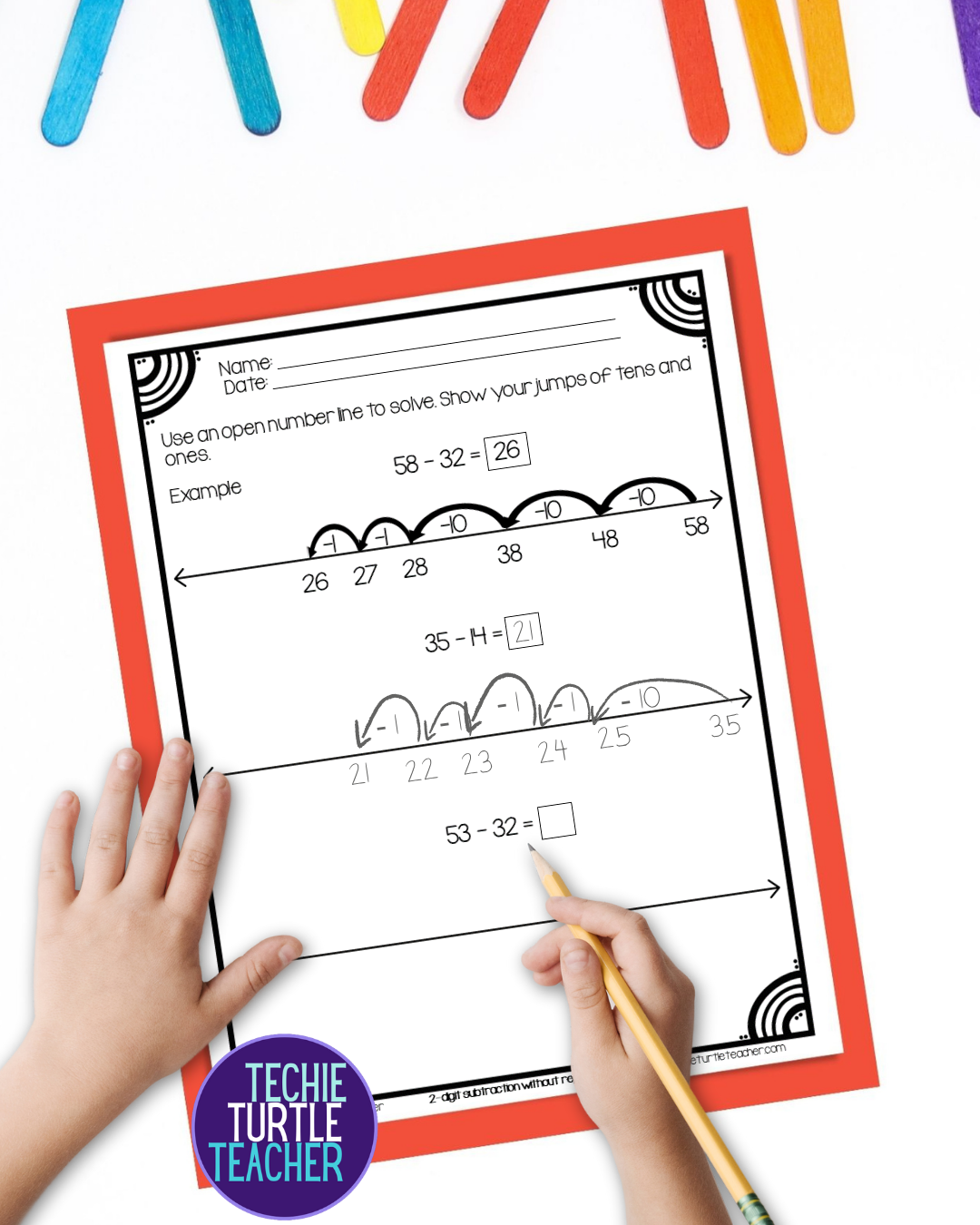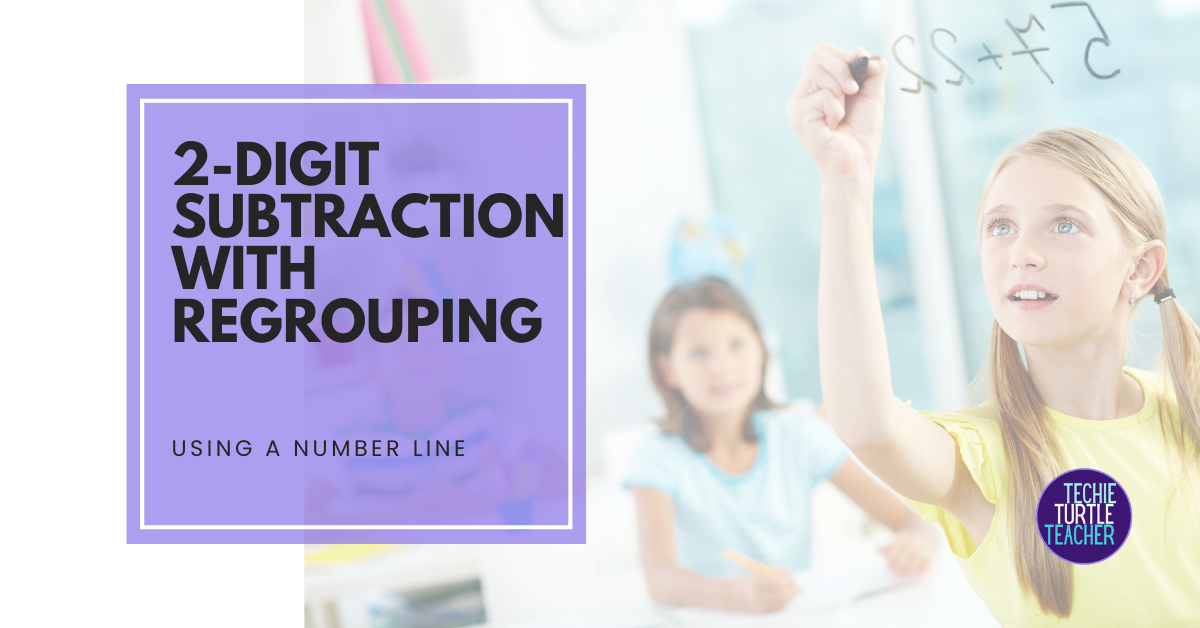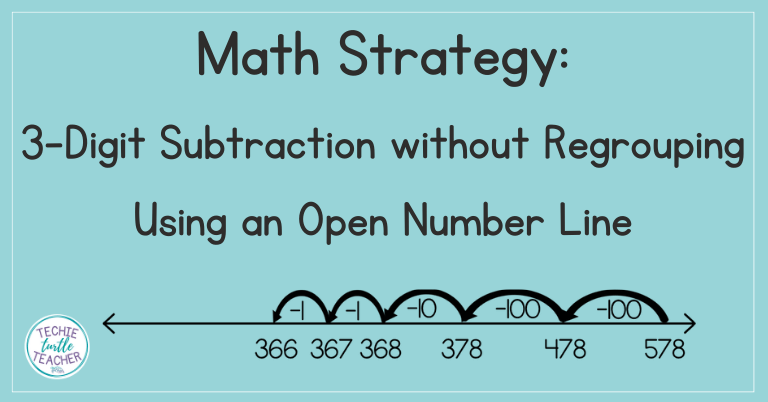Table of Contents
Subtraction Open Number Line Strategy: 2-Digit Numbers without Regrouping
Teaching 2-digit subtraction without regrouping can feel overwhelming, especially when every student is at a different level.
One of the most flexible strategies I use is the subtraction open number line.
It allows students to visually track their thinking and break numbers apart in a way that makes sense to them.
Before introducing this method, I focus on subtraction using base ten blocks and the break apart strategy.
Once students are confident with those, they’re ready to move into more abstract thinking with the subtraction open number line.
The standard 2.NBT.5 encourages using a variety of methods for solving 2-digit subtraction problems.
I take this slowly, giving students multiple strategies to try before jumping to the traditional algorithm.
The subtraction open number line helps bridge that gap in a way that supports all learners.
What Is the Subtraction Open Number Line Strategy?
It’s subtracting on a blank number line that students build themselves as they subtract.
Unlike addition, where you often start on the left, in subtraction, the subtraction open number line begins with the larger number (the minuend) on the right.
Let’s walk through an example to see how it works in action.
2-Digit Subtraction without Regrouping on an Open Number Line Example

Start by placing 58 on the far right of the number line.

Then, look at the number you’re subtracting – 32 – and break it into parts.
Most students begin by subtracting the tens:

Since the problem is 58 – 32, I still need two more jumps of ten.

Once you finish subtracting all the tens, you are ready to subtract the ones.

You have now made three jumps of ten and two jumps of one.
58 – 32 = 26

The subtraction open number line strategy lets students see the problem unfold step by step.
I always remind students to write the new number after each jump – just like an airplane that lands at every airport before moving on.
It’s a simple way to avoid skipping steps or losing track of where they are.
Why Use a Subtraction Open Number Line?
There are so many benefits to using a subtraction open number line:
It supports number sense by breaking subtraction into manageable chunks.
It gives students the freedom to subtract in ways that make sense to them.
It provides natural opportunities for differentiation.
Some students might stick to subtracting in groups of ten and one.
Others might be ready to subtract 20 or even 30 in one jump.
As they gain confidence, they naturally start to move more efficiently.
That’s what makes the subtraction open number line such a valuable tool – it meets students where they are and grows with them.
Ready-To-Go Practice for Your Classroom
If your students are starting to use the subtraction open number line but need structured practice, I have just the thing.
I created a set of low-prep worksheets specifically for 2-digit subtraction without regrouping using this strategy.
These print-and-go pages walk students through subtraction step by step.
Each page includes:
Visual guides for building the number line
Space to show each jump
Practice with a variety of problems
It’s perfect for math centers, small group work, or independent practice.
You’ll be able to give your students meaningful practice while freeing up your time to work with other students.
If you’re looking for a clear, flexible way to teach subtraction – and a strategy that helps students truly understand what they’re doing – the subtraction open number line is a great place to start.
Click the image below to grab the full resource on TPT and get started today!
Want to try this strategy with your students before committing to the full resource?
Download the free sample worksheets and see how it works in your classroom.
Need help or have questions?
If you need help or have questions, the easiest way to reach me is to DM me on Instagram @techieturtleteacher.
Pin this to Pinterest for later






